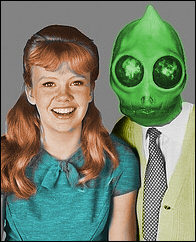 Repackaging and recycling old novels and novelettes is nothing new to the publishing world. As previously mentioned the Perry Mason books have been in nearly continual publication since the 1930s.
Repackaging and recycling old novels and novelettes is nothing new to the publishing world. As previously mentioned the Perry Mason books have been in nearly continual publication since the 1930s.
Cover art for books had changed drastically since the 1940s. By the time the 1980s came around the layouts were far simpler and an art trend began that was in full force by the time the 1990s appeared and exists to this day. While book covers may have been painted they were more likely to be photographed. Photographs can be easier to manipulate and in many cases are far less expensive. Stock photos have been known to be used in the place of original art. One other difference was that the female form was not in the forefront of the art as in previous eras.
More than likely the covers were, if not abstract, dark and moody, probably consisted of props generic to a mystery tale and usually no more than three were shown. A glove, a knife and a glass of wine or a gun, a key and a letter or some combination of vaguely mysterious items would usually be shown on the cover, typically blurred or in soft light. The photographic covers of recent years, particularly among the mystery titles, are notorious for following thematic trends if not blatantly ripping off each other. There are more than a few internet sites devoted to swiped art and themes of mystery and other novels. The far more generic and arty covers also ensured that women buyers were not alienated by the sexy cover art. As in the 1970s name recognition of either the author or main character became the major selling point for books. While traditionally a big name always helped push a book out the door in earlier eras it was in many instances the niche market of young men hooked by the tease of wanton females that closed a sale. Of course, this is not restricted to the book market.
But when simply slapping on a new cover on an old story wasn't enough then publishers diversified a bit by going after the youth market. The Hardy Boys, Nancy Drew and to a lesser extent The Three Investigators were very popular among younger readers. The Hardy Boys series had existed for decades and several volumes were produced. The original novels were re-written and updated to be more contemporary with brand new stories. In the 1970s the Hardy and Drew franchises outgrew their previous media flirtations and could be found in prime-time television, Saturday morning cartoons (as members of a crime-solving rock band), comic books and brand new novels. Unfortunately both the Hardy Boys and Nancy Drew television shows were popular not for the quality of the production but the attractiveness of the stars, a short-sighted but typical Hollywood endeavor.
Before the decline of libraries in America it was an easy task to locate complete sets of both versions of the Hardy books. Among many fans some of the 1940s versions of the books were preferred over the rebooted stories but that was not always the case. The 70s re-telling of the novels were more "realistic" and were all about solving white-collar crimes, usually with the aid of their father. The original novels occasionally drifted into the fantastic. The 1940 version of Disappearing Floor has such plot elements as sonic fear machines, mind control rays and a honest-to-gosh Science Villain. In many ways Frank, Joe and Nancy were not as accessible to readers as the Investigators. While the Hardy gang and Drew often traveled the world with their professional and successful families fighting crime the Investigators hung out in a junkyard, grifted a car company out of transportation and acted stupid around adults in order to fake them out. The Three Investigators books were a much funner read because they were more like the average young reader, fallow in resources and having to succeed primarily by using their wits. Where Nancy would just pop on down to the local FBI building to have one of the guys run fingerprints in the super-computer, the Investigators would be the kind of guys who would have to compare prints themselves with a cracked magnifying glass they salvaged from the junkyard using a personally-gathered database of suspects they fooled into handling polished drinking glasses. They were hard core.
If Diamond Bomb had existed to have been re-written for the young adult market then she would have been subjected to a radical personality change. She would no longer be a reformed thief and she wouldn't shoot people in the legs to make a point. Men would be pals to and not meat toys. Diamond would have been essentially rebooted as a Nancy Drew clone. She would be younger, sweeter and didn't use guns, except in a situation where she would tremulously point it at a villain who would then take it from her and hold her hostage. Diamond will have been in a non-threatening and chaste relationship with a steady boyfriend that her father approves of. Her adventures would have been technically exciting but not really dangerous. Diamond would invariably be kidnapped by the bad guy but would manage to free herself and solve the crime just as the police arrived to apprehend the criminal.
The above mock-up book cover for Diamond Bomb #1 - Those Meddling Kids was adapted from a Nancy Drew publication.
Sunday, September 06, 2009
Those Meddling Kids
Posted by
Sleestak
at
9/06/2009 11:00:00 AM
![]()
![]()
Labels: Diamond Bomb
Subscribe to:
Post Comments (Atom)



























No comments:
Post a Comment
Moderation enabled only because of trolling, racist, homophobic hate-mongers.
Note: Only a member of this blog may post a comment.